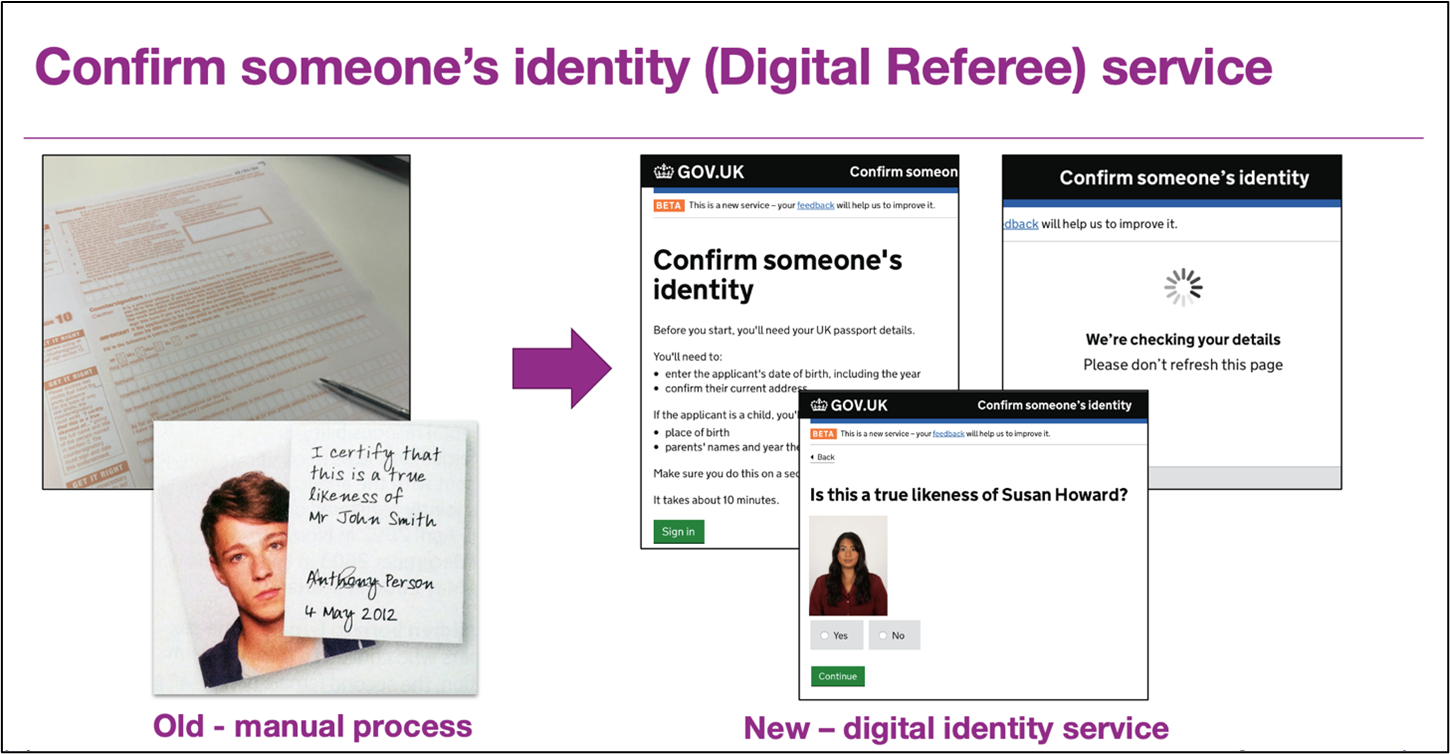Digital ID Reinvented: Robust assurance, Delighted Users
The public sector has some of the most challenging identity verification needs. From getting a passport to filing tax returns, its digital services must have robust policy compliance, fraud protection and data safeguards. At the same time, citizens are used to seamless consumer user experiences and have varying digital skill levels.
So, how do you strike the balance between assurance and user experience?
Recent public sector digital ID innovations like the Digital Referee Service built by Kainos with HM Passport Office, and the NHS App, built by Kainos with the NHS, offer valuable lessons. In this article, we’ll look at three:
- Keeping digital ID in context
- Ensuring usability
- Getting assurance levels right
Keep digital ID in context
Best-practice digital service and experience design is human-centric, and this applies to digital ID, too.
Users don’t see themselves as needing a digital ID. They’re focused on an outcome – like applying for a driving licence or getting medical test results. And they want to do it seamlessly.
Therefore, innovative approaches to digital ID are within the user’s existing process. Asking people to go elsewhere to create an ID and verify their identity before continuing their journey creates unnecessary friction.
We recommend following a human-centric digital ID design approach to ensure its inclusive, accessible and aligns with user behaviour in context:
- Empathise: Conducting research to develop domain understanding
- Define: Combining research and observing areas of opportunity and friction
- Ideate: Identifying the right service experiences
- Prototype: Building tactile representations for a range of ideas
- Test and learn: Iterating based on user feedback
Make the ID verification process user-friendly
If the digital ID process is onerous, you’ll have high abandonment rates and frustrated users.
HM Passport Office (HMPO) is a great example of getting usability right. When applying for a passport, more than 40% of citizens need a referee – a trusted member of society who can verify the applicant’s identity. This used to involve signing a paper application form. When HMPO created a digital passport application service, it needed to replicate this online.
This became the digital referee service.
On the online form, the applicant nominates someone to confirm their identity. That person gets an email linking them to the digital referee service. The referee user experience is critical because they’re doing the applicant a favour.

When the referee clicks the link, HMPO must confirm they are who they claim to be.
The ID process is designed so that the referee only has to input expected information they’d have to hand – like name, birthdate, address and passport number – so the identity check is seamless. Then, they can view and confirm the applicant’s details.
The digital referee service has exceeded HMPO and user expectations:
- 95% of people are successfully able to confirm someone’s identity online
- 96.6% of people are satisfied with their experience of confirming identity online
- 99.5% of people would do it again
HMPO’s digital referee service became an exemplar within UK government and has been showcased internationally. ‘Couldn’t be better and easier’– that’s a direct quote from user survey feedback on HMPO’s digital referee.
Get assurance levels right
Yes, digital ID services must be user-friendly, but they must also have robust assurance – because you don’t want to enable fraud or give out personal information incorrectly. To strike the right balance between usability and assurance, decide the confidence level needed for each use case – and don’t go beyond it.
The NHS App does this exceptionally well. It’s available to everyone registered with a GP practice in England aged 13 or over. It’s a simple, secure way for people to access a range of NHS services on their mobile or computer, including checking symptoms, booking and managing GP appointments, ordering repeat prescriptions and viewing medical records.
These use cases involve varying degrees of personal information, which means they require different verification levels. The digital ID process reflects that.
NHS App user registration with NHS login

- When first opening the app after downloading, new users create an NHS login.
- Users then enter demographic details, which are checked to correspond to a record on the NHS Personal Demographics Service (PDS).
- To get full access, users can either "fast track" by linking their NHS login mobile number with an existing GP account or by uploading an image of their ID and completing a liveness check.
- Returning users can log into the app using their fingerprint or face ID
During the COVID-19 pandemic, users verified at medium verification levels were able to access their NHS COVID Pass for entry into some venues and events.
‘It feels a bit like magic’
That’s a direct quote from Tom Read, former CEO of Government Digital Services (GDS), who highlighted HMPO’s digital referee as one of the best recent public sector innovations. He also mentioned NHS App in the same list. Truly innovative services should feel like that for users.
Why not get that same kudos for your digital ID service?
By keeping digital ID in context, ensuring usability and getting assurance levels right, you’ll leverage lessons from recent innovations – and be on track for robust security and great user experiences.

Welcome to techUK’s 2024 Digital ID Campaign Week! On the 14-18th Oct, we are excited to explore how our members are increasing efficiency for both businesses and users, combatting fraud, as well as what creative and innovative ways our members are expanding our understanding of Digital Identities.
Whether it’s how we’re communicating, shopping, managing our finances, dating, accessing healthcare or public services, the ability to verify identity has quickly become a critical vanguard to the Digital Economy.
Follow us on LinkedIn and use the hashtag #UnlockingDigitalID to be part of the conversation!









